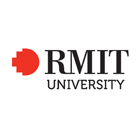Master of Science (Mathematical Sciences)
- Home
- Courses
- RMIT University (Royal Melbourne Institute of Technology University)
- Master of Science (Mathematical Sciences)
Master of Science (Mathematical Sciences)
Develop your logical, analytical and creative problem solving skills and further the growth of mathematical theory and application. You will join an active research community and work with academics, peers and partner organisations who have demonstrated research success in a range of specialities, including: Mathematics algebraic coding theory complex networks…
Categories
COURSE DESCRIPTION
Develop your logical, analytical and creative problem solving skills and further the growth of mathematical theory and application.
You will join an active research community and work with academics, peers and partner organisations who have demonstrated research success in a range of specialities, including:
Mathematics
algebraic coding theory
complex networks and epidemiology
computational fluid dynamics
dynamics and control theory and applications
environmental and resource modelling
general mathematical modelling
graph, complexity and network theory
information security
integer programming and discrete mathematics
mathematical biology
numerical analysis
optimisation theory – algorithms and applications
Statistics and operations research
analysis: survival data, reliability, exploratory data, time series, sequential, decision
data mining
game theory and applications
nonparametric statistical techniques
optimisation and applications
statistical quality control
sport, bio, financial, multivariate statistics
supply chain, and stochastic modelling
queueing theory and applications
Career
A masters degree will provide you with a foundation for further studies into a PhD and employment in senior leadership and management research-based positions in a variety of government, non-government and corporate organisations.
EDUCATIONAL INSTITUTION
Since its establishment in 1887, Royal Melbourne Institute of Technology University (RMIT) has been meeting the needs of the community surrounding it. Originally a Working Men’s College, RMIT showed its flexibility during World War Two, training over 20,000 servicemen in communications to help with the war effort.Now, it is a true pioneer in international education, championing cross-border study opportunities with campuses in various countries. Granted formal university status in 1992, RMIT is ranked 21st in the world for universities that are less than 50 years old.RMIT is the largest higher education institution in Australia, currently with more than 82,000 students. With nearly 20% of those students coming from overseas, it is a university that truly welcomes diversity and is a melting pot of different cultures. RMIT has three campuses in Vietnam, a European hub in Barcelona, an office in Indonesia, and partners with 200+ institutions in 42 countries to provide study opportunities worldwide.
Since its establishment in 1887, Royal Melbourne Institute of Technology University (RMIT) has been meeting the needs of the community surrounding it. Originally a Working Men’s College, RMIT showed its flexibility during World War Two, training over 20,000 servicemen in communications to help with the war effort.
Now, it is a true pioneer in international education, championing cross-border study opportunities with campuses in various countries. Granted formal university status in 1992, RMIT is ranked 21st in the world for universities that are less than 50 years old.
RMIT is the largest higher education institution in Australia, currently with more than 82,000 students. With nearly 20% of those students coming from overseas, it is a university that truly welcomes diversity and is a melting pot of different cultures. RMIT has three campuses in Vietnam, a European hub in Barcelona, an office in Indonesia, and partners with 200+ institutions in 42 countries to provide study opportunities worldwide.




